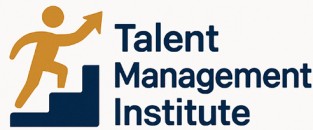Understanding the Role of Change Management Software in Talent Management
Integrating Technology: Bridging the Gap
In the constantly evolving landscape of talent management, understanding how software can streamline processes is crucial. Change management software plays a pivotal role by providing tools that help organizations manage and track changes efficiently. This kind of software allows leaders to oversee changes in real time, ensuring that processes stay compliant with safety and regulatory requirements.
The implementation of effective management change tools significantly influences the realm of organizational compliance, especially in high-stakes industries where safety management is paramount. Users can benefit from platforms that offer a structured approach to change processes, making it easier to handle change requests and maintain workflows. MOC software, specifically designed for change management, focuses on assessing risks and ensuring adherence to compliance standards such as those outlined by OSHA.
A well-integrated change management platform acts as more than just a tool; it becomes a service that enables organizations to efficiently manage their change process. These systems include change notification features that help track changes and facilitate seamless communication across teams. Furthermore, MOC software aids in risk assessment and can help mitigate potential issues before they escalate.
Understanding how these systems function can offer invaluable insights into improving frontline MOC and optimizing talent management processes. For organizations looking to explore the best management tools available, there are options for a
free trial, allowing users to test the features pertinent to their specific needs. This provides a real-time glimpse into how change management software can transform their operations, balancing pricing structures and functionalities tailored to different organizational requirements.
Ultimately, the role of change management software is to provide a robust platform for managing changes efficiently, ensuring that processes are not only reliable but also compliant and safe.
Key Features of Effective Change Management Software
Essential Attributes of Superior Change Management Tools
In the evolving landscape of talent management, change management software is pivotal in seamlessly handling organizational changes. The effectiveness of this software can be largely determined by certain key features:
- Comprehensive Workflows: Efficient workflows are essential to track changes and ensure all processes align with strategic objectives.
- Real-Time Updates: Having the ability to process and display real-time information is crucial for staying ahead in fast-paced environments.
- Risk Assessment Capabilities: A robust risk assessment feature helps in identifying potential risks associated with changes in processes or equipment, allowing management to mitigate these risks proactively.
- Regulatory Compliance: Compliance with safety management protocols, such as OSHA guidelines, is non-negotiable. The best management tools ensure adherence to these regulations.
- User-Friendly Interface: An intuitive platform enhances user engagement and adoption, reducing the time it takes for users to acclimate to the new system.
- Integration Capabilities: Seamless integration with existing systems, such as MOC (Management of Change) software, ensures data consistency and process optimization.
The selection of a change management platform should be based on a company's unique needs, involving a thorough analysis of the change processes involved. Platforms that offer a free trial or book demo options can provide firsthand experience, facilitating an informed decision. For insights on enhancing talent management with effective services, visit
Enhancing Talent Management with Logis Services.
Benefits of Integrating Change Management Software in HR Processes
Transformative Benefits of Seamless Integration in HR
The integration of change management software in HR processes can bring transformative benefits, particularly within the realm of talent management. Recognizing these advantages can significantly enhance an organization's approach to managing changes, which includes optimizing the competencies and efficiencies of their workforce.
Firstly, adopting a robust platform for management change facilitates effective communication and real time tracking. This ensures that change moc and change requests are seamlessly incorporated within existing workflows. An efficient system allows users to monitor and respond to changes promptly, reducing the time spent on repetitive tasks and reallocating resources for more strategic HR initiatives.
Secondly, the compliance aspect cannot be overlooked. Management software often includes built-in tracking for regulatory compliance and safety management. Maintaining compliance with MOC software can greatly minimize risks and ensure adherence to safety regulations, including compliance with OSHA standards. This fosters a culture of safety and legal compliance in your firm.
Furthermore, these tools enhance risk and change management by providing comprehensive risk assessment processes. Tracking changes and analyzing their impacts on processes equipment is critical for minimizing potential disruptions. This is particularly advantageous in protecting the integrity of service agreements and safety protocols, safeguarding both employees and company assets.
Another significant benefit is the improved efficiency of HR systems. The integration of sophisticated management tools aids in streamlining and automating change processes, delivering an optimized experience for both HR professionals and employees. The time and cost savings achieved through optimized workflows and automated processes can be substantial, providing users with a more responsive and agile environment to address change management concerns.
Finally, many change management platforms offer flexible pricing models, including options for a free trial to assess the system's effectiveness. By leveraging change management software, organizations can implement strategic, well-managed changes with increased agility and efficiency, thus reinforcing their competitive edge.
For more insights on unlocking and integrating transformative potential in talent management, consider exploring how hubspot consultants can provide further optimization. This focused strategy on enhancing HR with change management software is vital for organizational resilience in today's dynamic business environment.
Challenges in Implementing Change Management Software
Overcoming Hurdles in Implementing Change Management Software
When organizations decide to introduce change management software into their talent management processes, they often encounter several challenges. Recognizing these hurdles early on can help smoothen the transition and lead to a successful implementation.
- Integration with Existing Systems: One common challenge is ensuring that the new software integrates seamlessly with existing HR processes and systems. Compatibility issues can lead to disruptions in workflows and impact employee productivity.
- Understanding User Needs: Not all users have the same requirements or level of tech savviness. It’s essential to select a platform that accommodates the diverse needs of its frontrunners and frontline users. Providing a free trial or booking a demo can help identify and address these needs effectively.
- Compliance and Safety Concerns: Compliance with regulatory standards, such as OSHA, and ensuring safety management during the change process are crucial. MOC software can assist in maintaining regulatory compliance, but organizations still need to ensure that changes are documented and tracked appropriately.
- Proper Training and Risk Assessment: Comprehensive training is necessary to help users make the most out of the management tools. This includes navigating through features like real-time tracking of changes and conducting risk assessments as part of the change process.
- Cost and Pricing: With various change management software options available, organizations often face difficulty in choosing the best tools based on pricing. Decision-makers must evaluate service offerings and compare them to their budget constraints to determine what aligns best with their needs.
- Resistance to Change: Finally, the greatest challenge might come from within the organization itself. Resistance to new systems is natural, and organizations must work on change management by simplifying the change processes and addressing concerns upfront.
Effective handling of these challenges can ensure that the introduction of change management software enhances an organization’s talent management strategies without unnecessary disruptions.
Case Studies: Successful Implementation of Change Management Software
Real-World Success Stories with Change Management Software
Exploring the successful implementation of change management software sheds light on its profound impact in practice. In various industry settings, change management software has facilitated smoother transitions by seamlessly integrating new processes and ensuring regulatory compliance.
One notable example involves a health services company that implemented change software specifically tailored for their rigorous safety management requirements. By using cutting-edge management tools, they effectively addressed risk assessment and compliance with OSHA standards. This resulted in enhanced safety measures without disrupting existing systems.
In a manufacturing setting, a robust change management platform empowered the organization to better handle their frequent process equipment updates. By streamlining workflows and tracking changes in real time, the platform mitigated operational risks, reduced downtime, and fostered a more adaptive workplace culture.
Service industries have also benefited from effective integration of MOC software solutions. A leading service provider utilized these tools to manage change requests across various departments. This centralized approach enabled users to quickly assess potential risks and implement necessary modifications without compromising service quality.
Moreover, many organizations have opted for platforms offering features such as MOC dashboards and risk compliance analytics. Implementing these tools often came with a trial period to fine-tune the software’s utility to fit the company's specific needs, proving their value before full-scale integration.
In retail, the adaptability of change software contributed to more agile processes, allowing management teams to respond swiftly to market changes and stay competitive. The combination of track changes, proactive risk management, and streamlined compliance processes became a best practice across the network.
While the procurement of top-tier management software requires considering pricing and available free trials or demos, these illustrative cases highlight the strategic advantage gained through thoughtful implementation. By observing such examples, businesses can better navigate the challenges of change processes and capitalize on the benefits of tailored management solutions.
Future Trends in Change Management Software for Talent Management
Emerging Trends in Change Management Software for Talent Management
In today's dynamic work environment, change management software is evolving to meet the increasing demand for streamlined processes and enhanced compliance within talent management. Companies are continuously seeking innovative solutions to address these challenges, and several trends have emerged in the sphere of change management technologies.
- Integration with AI and Machine Learning: AI and machine learning are becoming integral to change management tools, providing predictive insights and automating risk assessments. These capabilities help organizations anticipate potential issues and enhance decision-making processes.
- Emphasis on User Experience: Modern change software platforms are prioritizing user-friendly interfaces to improve user engagement and efficiency. This shift ensures that frontline MOC users can easily navigate the systems, making real-time updates and tracking changes more accessible.
- Focus on Regulatory Compliance and Risk Management: As regulatory landscapes become more complex, compliance with standards like OSHA remains a top priority. The latest management tools emphasize strong compliance features, ensuring safety management and risk mitigation are at the forefront of process execution.
- Real-time Collaboration and Communication: Enhanced communication tools within management software allow for seamless collaboration across teams, ensuring that changes are communicated effectively and acted upon promptly.
- Increased Demand for Customizable Solutions: Organizations appreciate the flexibility of tailoring management change solutions to fit their specific requirements. Customizable workflows and processes ensure more effective implementation across various departments.
- Expanded Free Trials and Pricing Models: With a variety of pricing models, including freemium and subscription-based services, companies can test new change management tools, like a book demo or free trial, before committing to a full rollout, providing opportunities to explore the best options.
Adapting to these trends is crucial for organizations seeking to maintain a competitive edge in talent management. By leveraging modern tools and systems that support real-time management change, companies can better navigate the complexities of change processes and enhance their overall HR efficiency.














